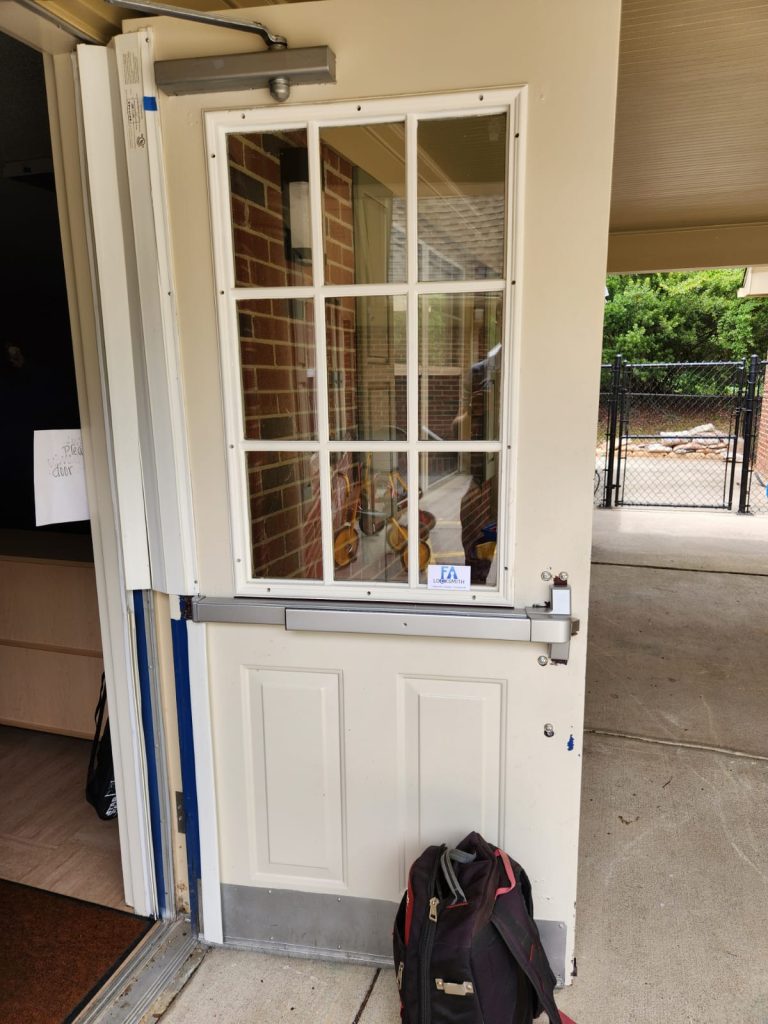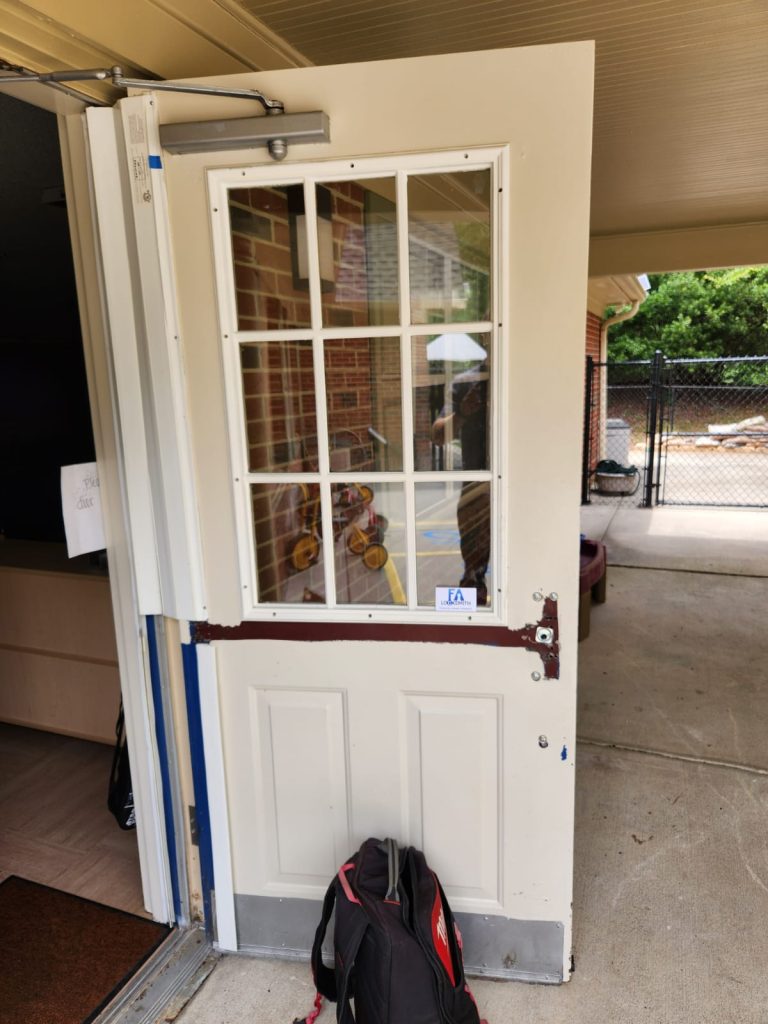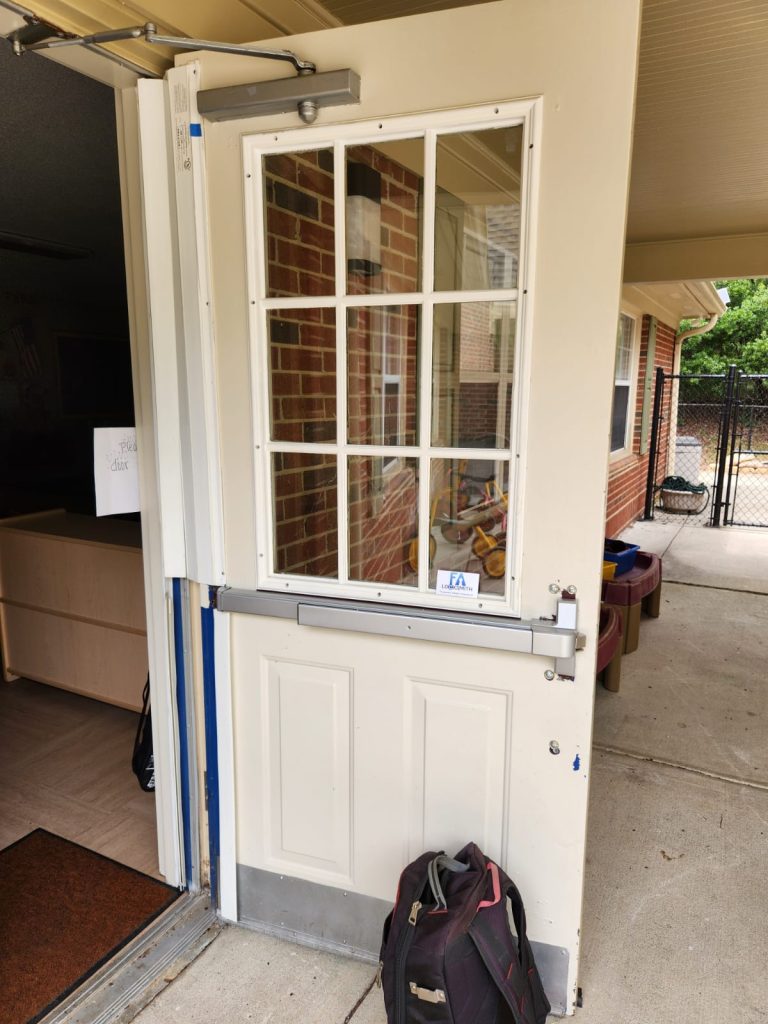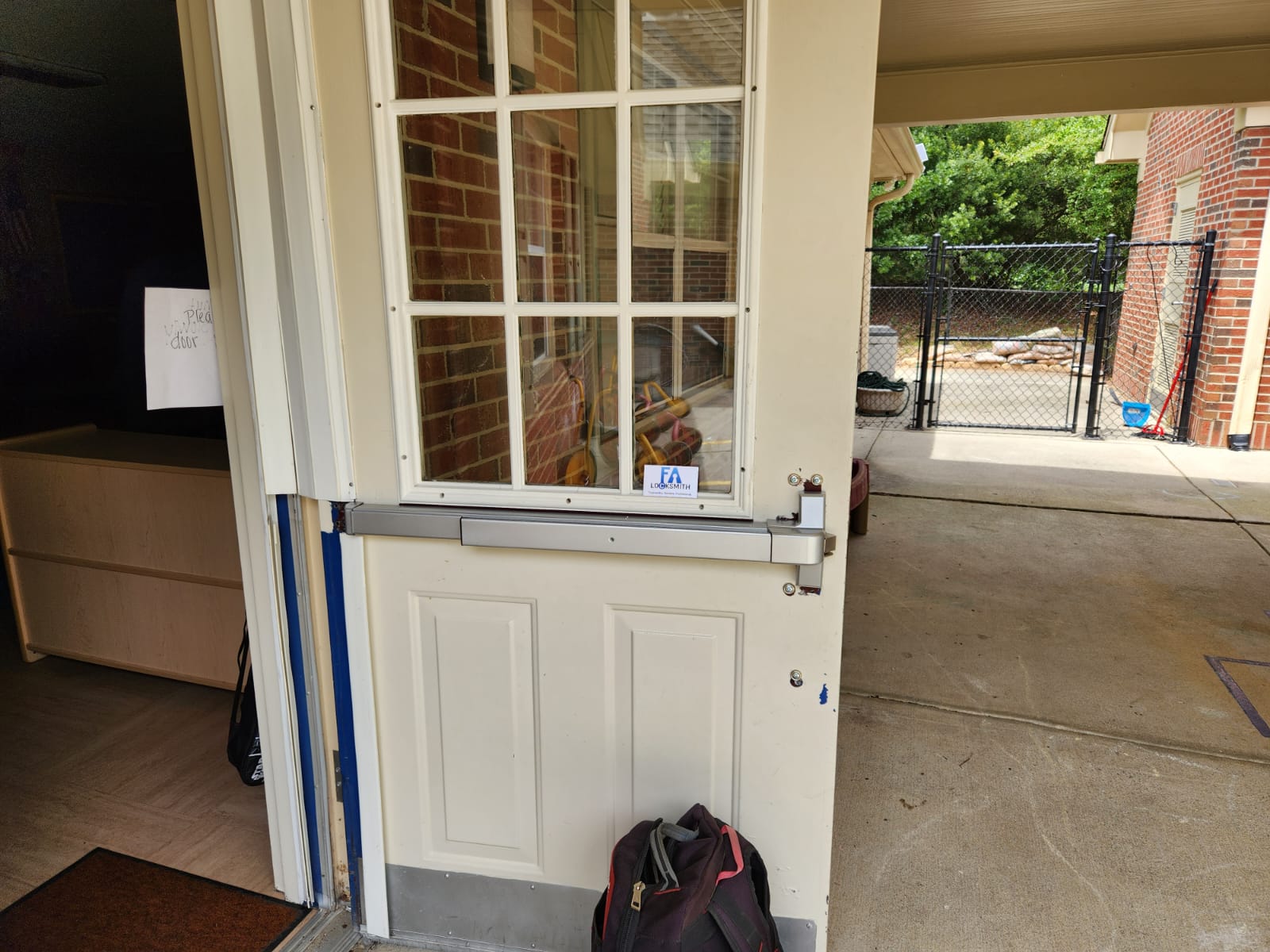Panic bars and emergency exit devices are a crucial part of your business’s overall safety plan. Here at FA Locksmith, we’ve worked with many business owners in the Raleigh and Triangle Area to ensure that their workplace, school, or hospital is safe for everyone who walks through their doors.
And we also know that navigating the building codes and finding the right equipment for your space can be tricky. In this article, we’ll explain how panic and fire exit hardware works so that you can choose the right set up for your business.
What are the differences between panic bars and fire-rated exit devices?
Most people who enter your building have no idea that there are actually many different kinds of technology and hardware keeping them safe. Here’s a rundown of the most common kinds of exit devices:
- Panic bar. A basic panic bar is a device that allows the user to easily push open the door by pressing on a horizontal bar. This is important in the case of an emergency and for people with disabilities who may not be able to open a knob or handle. Panic bars may or may not be connected to an alarm system, and can be manually “dogged” or calibrated to be unlatched for easier swinging.
- Fire-rated exit device. Fire-rated exit hardware looks and functions almost the same as a panic bar. But the key difference is grading. Fire-rated devices are graded to be used on fire-rated exit doors as well as regular doors, whereas panic bars can only be used on non-fire-rated doors. Fire-rated exit devices also cannot be dogged.
This important distinction is a good starting point to understanding panic hardware for commercial buildings.
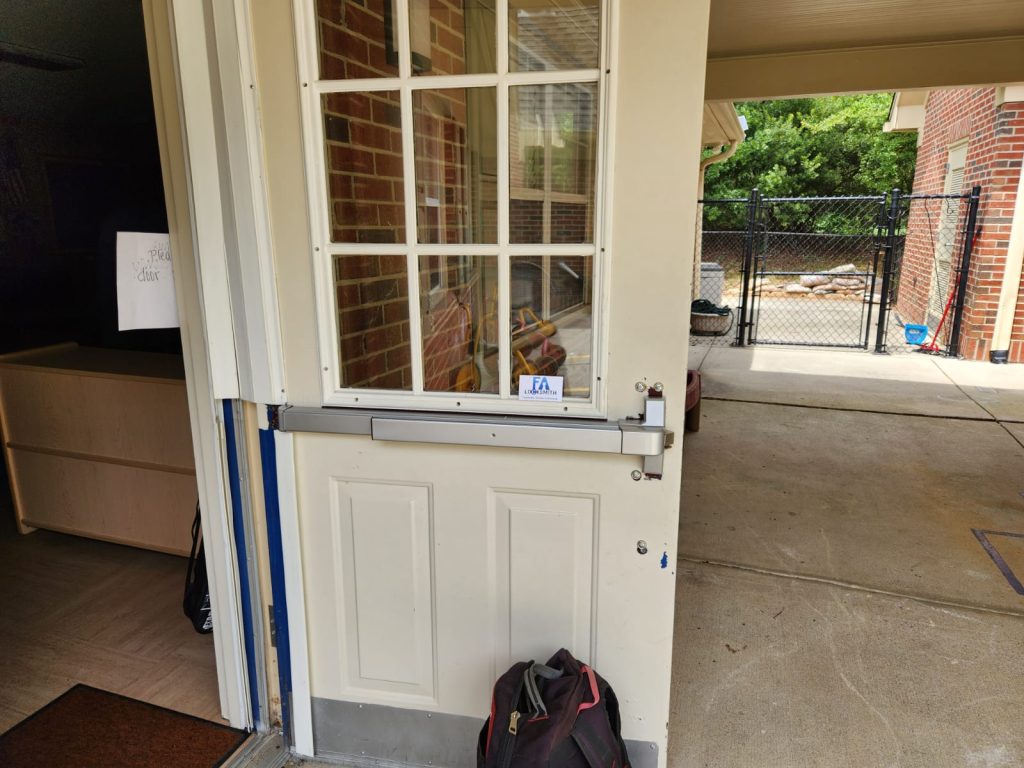
Rim, mortise, vertical rods and multi-point panic hardware for commercial buildings
As a business owner, you have one priority: safety. That means both the safety of your occupants in the event of an emergency as well as the safety of your team and possessions from a break-in. So, it’s a good idea to familiarize yourself with the different levels of security in panic hardware:
- Rim latch panic bar. This is the least complex and most common kind of panic or crash bar, and it’s suitable for most settings. The latch extends visibly from the device in order to catch on the door frame or mullion (i.e. the metal beam between two double doors.)
- Mortise panic bar. Mortise locks have been around for many years, and it’s because they are reliably secure and strong. Mortise lock panic hardware is installed within the housing of the door and frame, thus hiding the locking mechanism when the door is shut. Mortise locks are not as common in commercial settings because installation is more intensive and not appropriate for all door types.
- Vertical rods. Vertical rods allow the door to be latched at the top or bottom of the door frame. This is often used for double-doors in which a business owner doesn’t want to install a mullion onto which the rim lock will latch. In terms of security, it does have some vulnerabilities, especially if it’s not outfitted to an alarm system.
- Multi-point panic hardware. A multi-point system combines a rim lock with a vertical rod for added stability and security. In settings which double as storm shelters, this set-up is generally considered the most secure.
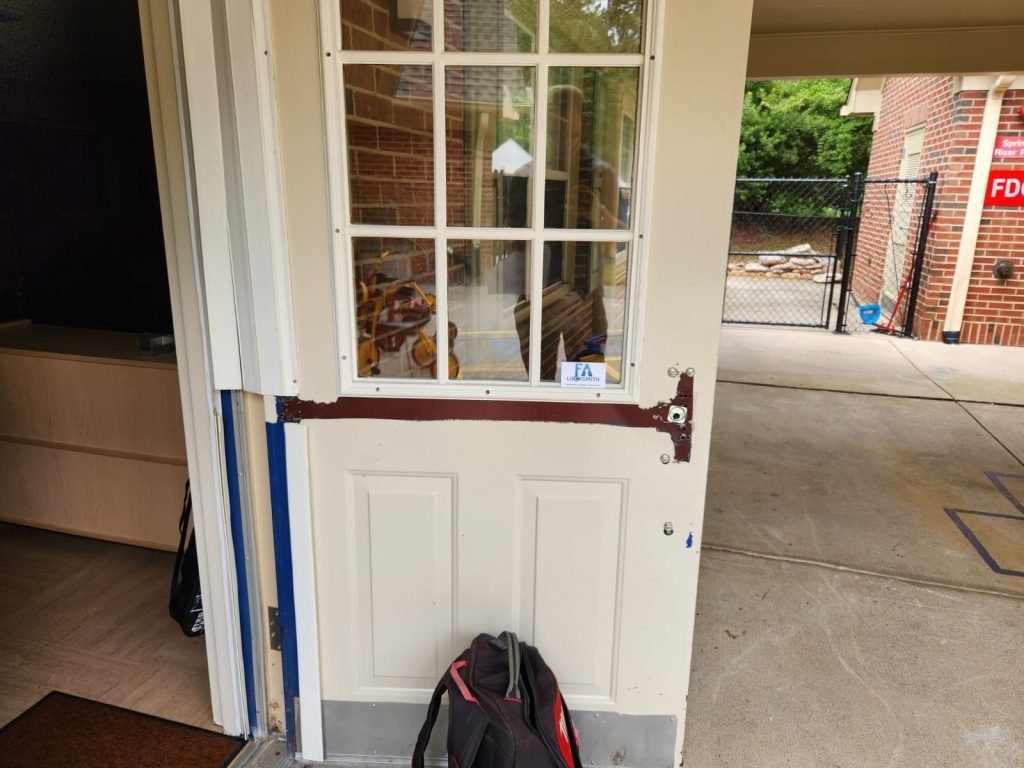
Delayed egress panic bars
In certain settings, it may be necessary to install a delayed egress, or delayed opening mechanism on a door. This is common in certain medical settings in which staff want to prevent patients from wandering out, or protect the safety of young children and babies. There are a number of other applications, as well.
Delayed egress works by keeping the door closed for a set period of time until an alarm is triggered and the door is released. It is not allowed by code in all settings, so your trusted locksmith can help you figure out if delayed egress is required in your space.
Panic bar requirements and regulations
When you call a locksmith to install panic bar hardware, the first thing that we’ll do is assess your space with the International Building Code and OSHA in mind. Here are a few of the requirements we’ll consider:
- Panic hardware must be used on doors that have a lock and latch for spaces in which the maximum occupancy is 50 people or more. This refers specifically to rooms that fall under Group A or E occupancy, such as gyms, schools, restaurants, churches, and museums.
- Panic hardware must be installed when the door provides an exit for a room with Group H occupancy (Group H referring to spaces housing hazardous materials.)
- Panic bars and fire-rated exit devices must be used on out-swinging doors.
- Panic hardware must be easy-to-use and accessible for people with disabilities. There are a few specifications that are needed to comply with this, such as the panic bar spanning more than half of the width of the door and being mounted 34 to 48 inches from the floor. Another important requirement is that the door itself should swing open with minimal force.
- Emergency exits must be clearly marked. If your panic bar is affixed on an emergency exit, it will also need signs and visible indicators so that people can act quickly in the case of an emergency.
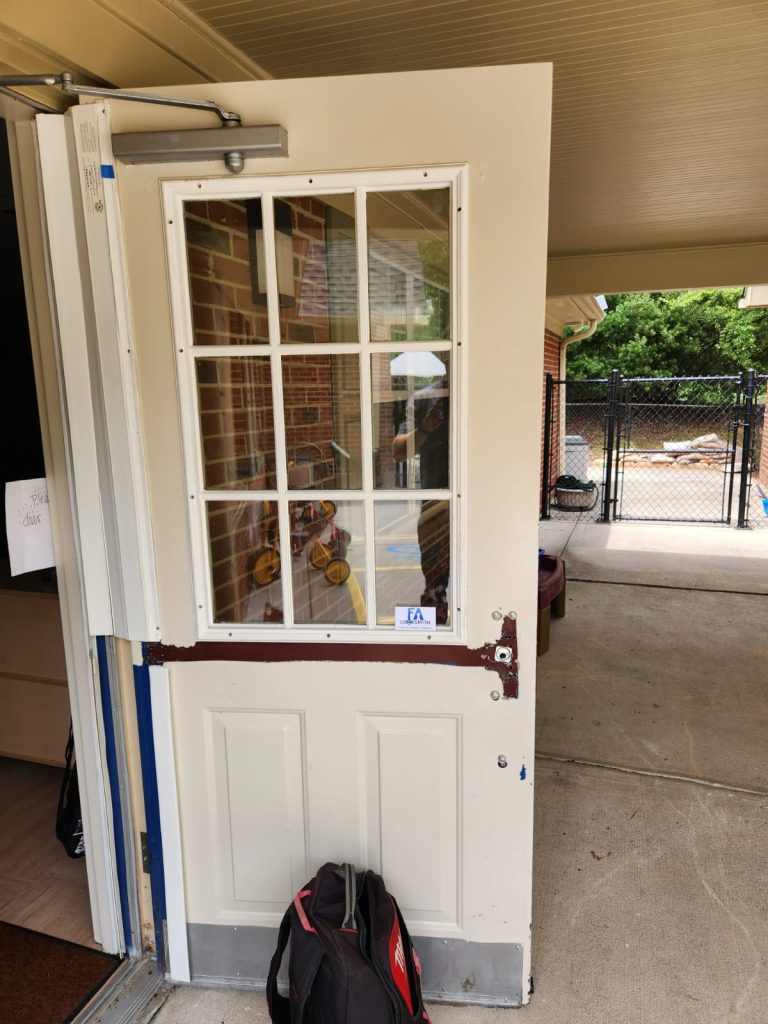
Fire exit and panic bar maintenance
As with any security system, panic and fire exit hardware is only reliable when it’s proven to be functioning normally. And that’s why many building codes require regular testing and drills to ensure that panic hardware will work in a real emergency.
If you notice any faults or issues with any of your panic hardware, don’t wait to fix it. Even one faulty exit can spell disaster during an emergency situation. Here are some of the most common reasons why we’re called out for panic bar repair services:
- Faulty installation. Because panic and emergency exit devices for businesses must comply with building codes, it’s never a good idea to go the DIY route. Trained professionals are your best option for installing well-functioning and safe exit devices for your commercial space.
- Problems with the technical element of the panic hardware. If your panic hardware is connected to an alarm system, it can be tricky to get all of the components to work properly together. Troubleshooting technical problems is essential to make sure that the emergency exit device with alarm is ready for anything.
- General wear & tear. Panic hardware is often installed on doors with high traffic, meaning that they can naturally lose functionality over time. Remember that panic hardware must be able to be opened with minimal force in order to comply with building codes and accessibility requirements. So, if you find that your bars are sticking or your doors are not swinging open easily, it’s time for some panic bar maintenance.
FA Locksmith is your go-to locksmith services for panic hardware solutions for your business, small or large!
In this article, we’ve given you the basics of fire-rated exit devices and panic hardware for commercial buildings. But, the truth is, every setting is a little bit different. Here at FA Locksmith, we can make sure that your Raleigh, Durham or Chapel Hill NC business doors are safe, reliable, and up-to-code. It’s what makes us one of the most trusted locksmiths for business owners in Raleigh-Durham-Chapel Hill. Call today for a free estimate!
